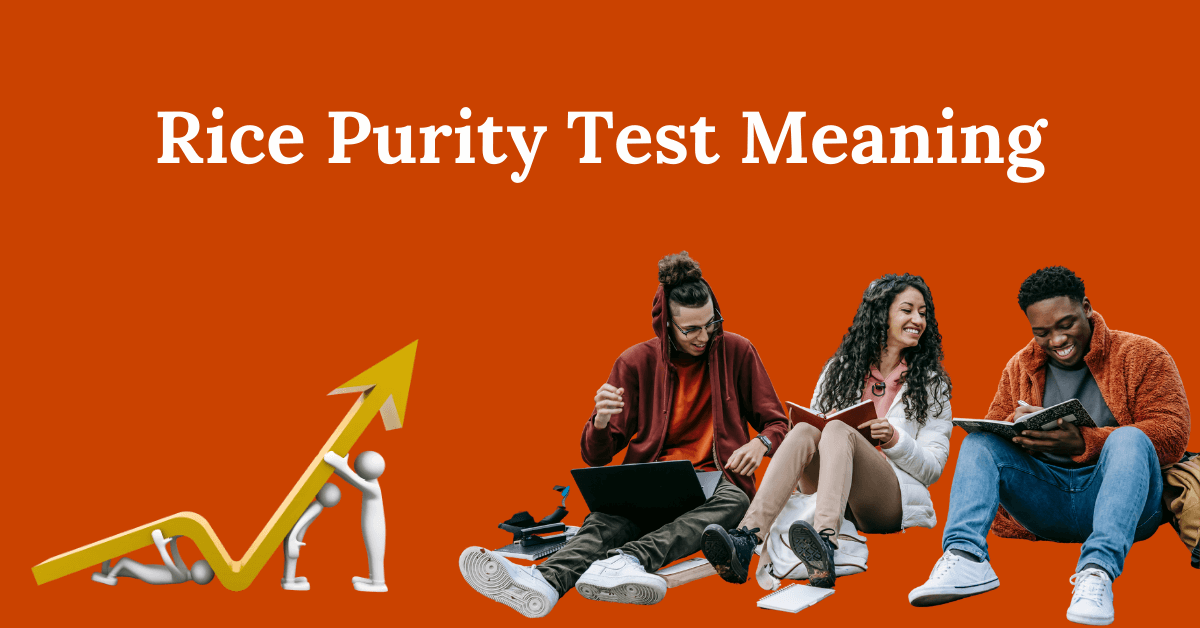The Rice Purity Test: Your Score Isn’t What You Think It Is
You’ve probably seen the screenshots on social media — a friend proudly displaying a “98” or laughing at a “35.” You’ve heard the whispers in dorm rooms and group chats: “What did you get on your rice purity test?”
This simple, hundred-question survey has become a rite of passage for generations of students. But what is the Rice Purity Test, really? Beyond the number, it’s a fascinating snapshot of youth, social norms, and the journey into adulthood.
This article isn’t just about checking boxes. We’re diving deep into the history of the test, what your score might (and might not) mean, and why this decades-old quiz continues to captivate us today.
What is the Rice Purity Test? A Modern Rite of Passage
The Rice Purity Test is a self-graded survey comprising 100 yes-or-no questions designed to gauge a person’s level of “innocence” or life experience. The questions cover a wide range of topics, from the mildly adventurous (“Have you ever cheated on a test?”) to the more intimate (“Have you ever had sexual intercourse?”).
- The scoring is straightforward:
- You start with a perfect 100-point score.
- For every question you answer “yes” to, one point is deducted.
Your final score is your “purity” rating—a higher score suggests more “innocence,” while a lower score indicates more life experience.
However, it’s crucial to remember it is not a standardized psychological assessment. It has no scientific basis. It’s a social tool, a piece of internet culture that has endured far longer than most memes.
A Surprising History: It Didn’t Start with TikTok
While it feels like a Gen Z phenomenon, the test’s roots go back decades. As the name suggests, it is believed to have originated at Rice University in Houston, Texas, in the 1920s or 1930s. Initially, it was a much shorter paper questionnaire circulated among incoming students as an informal icebreaker. Its purpose was to help strangers connect, break down social barriers, and nervously laugh about the shared experiences and curiosities of young adulthood.
Before the internet, it spread through photocopies and word-of-mouth to other colleges. Consequently, with the dawn of the digital age, it found a permanent home online, where sites like ricepuritytest.com and others standardized the questions and made it accessible to a global audience. Its viral resurgence on platforms like TikTok and Instagram has introduced it to a whole new generation.
Decoding Your Score: What Does It All Mean?
So, you’ve taken the Rice Purity Test. You have a number. Now what? It’s easy to get caught up in comparing scores, but context is everything.
General Purity Test Score Interpretations (With a Grain of Salt)
- 90-100: The “Pure” Zone: Often associated with younger individuals or those who have had a more sheltered or cautious upbringing. This score is common among high school students. The key is not to see this as “naive,” but as having a wide-open book of future experiences ahead.
- 70-89: The “Average” Explorer: This range is typical for many college students. It suggests a willingness to try new things, step slightly outside one’s comfort zone, and engage in common social experiences like dating or partying, but within certain boundaries.
- 50-69: The “Experienced” Adventurer: A score in this range indicates significant life experiences. The individual has likely explored their personal and social boundaries more extensively. It’s a score that often sparks the most conversation and curiosity.
- Below 50: The “Worldly” Veteran: A low purity test score suggests a vast array of life experiences. It’s important to avoid judgment here. This doesn’t define a person’s character; it simply reflects a different life journey.
The most important Rice Purity Test takeaway: Your score is a personal snapshot, not a badge of honor or a mark of shame. It reflects your unique path, your values, your opportunities, and your choices. A 100 is not “better” than a 40, and a 40 is not “cooler” than a 100.
Why Do We Keep Taking The Rice Purity Test?
So why does this simple list of questions hold such enduring power? The reasons are more profound than they seem.
Social Bonding and Icebreaking: This is its original and most powerful function. Taking the test with friends or new acquaintances creates instant camaraderie. Comparing answers leads to funny stories, shared confessions, and a rapid breakdown of social walls. Therefore, the shared experience that fosters connection occurs.
Self-Reflection and Identity Formation: For young adults figuring out who they are, the test acts as a mirror. It prompts questions like: “What have I done?” “What do I want to do?” “What are my boundaries?” It’s a low-stakes tool for navigating the complex process of defining one’s own identity and values apart from their family.
Pure Entertainment and Curiosity: Let’s be honest — it’s fun. It’s a quiz, and humans are naturally curious about themselves and others. The thrill of answering honestly and the anticipation of the final score make for an engaging few minutes.
A Word of Caution
For all its fun, it’s vital to approach the Rice Purity Test with a healthy mindset.
- It’s Not a Competition: The biggest danger is turning it into a contest to see who can get the lowest (or highest) score. This can lead to feelings of inadequacy, peer pressure, or even bragging about risky behaviors. Your journey is yours alone.
- Avoid Judgment: Above all the test should be a judgment-free zone. Shaming someone for a high or low score misses the entire point and can be deeply harmful.
- It’s Deeply Flawed: The test is a product of its time. Therefore, its questions often reflect heteronormative, traditional views on sex and relationships. It doesn’t account for consent, emotional context, or personal trauma. It’s a blunt instrument, not a nuanced measure of a person’s life.
Conclusion
To sum up, The Rice Purity Test is a cultural artifact, a social catalyst, and a personal reflection tool all rolled into one. Its longevity is a testament to our innate desire to understand ourselves and connect with others through shared experience.
Your score is a single data point on the graph of your life—a life that is constantly changing and evolving. The number itself is meaningless without the story behind it. So, if you take it, take it with friends, laugh about the questions, and share your stories. But then, close the tab and go live your life. Don’t let a number from an internet quiz define you; instead, let it be a starting point for conversation, self-discovery, and without judgment, either of others or of yourself.
The truest measure of your character isn’t found in a purity score; it’s found in how you treat others, the choices you make with intention, and the kindness you show yourself on your own unique journey.













